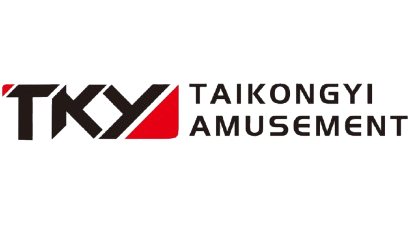Technical Guidelines for Safe Installation of Coin-Operated Games
Floor Load Capacity Calculations for Arcade Claw Crane Machines
Assessing the floor load capacity is crucial when setting up arcade claw crane machines, as it ensures safety and suitability for coin-operated games. Different commercial spaces often exhibit varied load capacities due to diverse construction techniques and materials. Therefore, understanding the floor's weight-bearing limits is essential. To calculate the necessary floor load capacity for a standard arcade claw crane machine, one must consider factors such as the machine's weight, weight distribution, and a safety margin. Typically, these machines weigh around 400 to 600 pounds. Distributing this weight evenly across the base prolongs durability and reduces the risk of floor damage.
It is beneficial to refer to industry data to support these calculations. Reports from arcade equipment manufacturers indicate that standard claw machines have an average weight around 500 pounds, demanding an equivalent floor load capacity per machine. Including a safety margin of about 20% is advisable to accommodate any unforeseen structural weaknesses or additional weight from player interactions. By carefully calculating and adhering to these guidelines, arcade owners can ensure the integrity and safety of their setup.
Visibility and Accessibility Considerations
In the world of arcade gaming, ensuring optimum visibility and accessibility of coin-operated games is vital for maximizing revenue and user satisfaction. Best practices involve placing arcade machines in high-traffic areas where they are easily seen and engaged with by passing customers. Studies demonstrate that well-positioned machines often see a significant increase in play, as the casual visibility piques interest and encourages spontaneous participation.
Accessibility further enhances user experience, making it important to consider the needs of users of all ages and abilities. Compliance with ADA standards is not just a legal obligation; it opens up the arcade to a broader demographic. Features such as clear pathways, wheelchair accessibility, and controls within reach height greatly improve accessibility. Research indicates that accessible environments can boost revenue potential, as a more diverse audience is able to enjoy the games. Thus, investing in visibility and accessibility improvements is not only a strategic business decision but also fosters inclusivity and customer satisfaction.
Power Supply Specifications for Claw Machine Models
Understanding the power supply specifications for claw machine models is crucial for both safety and performance. Each claw machine requires a specific voltage and amperage to operate efficiently. Typically, these machines function best within a range of 110-120 volts and a current of 5-10 amperes, although this can vary based on the machine's size and complexity. The correct power supply ensures that the machine functions properly and reduces the risk of electrical hazards. It's essential to adhere to safety standards set by organizations such as the Occupational Safety and Health Administration (OSHA) and the National Electrical Code (NEC). These regulations provide guidelines that manufacturers and installers must follow to prevent electrical mishaps and ensure the safety of users.
Grounding Requirements for Coin-Operated Equipment
Adhering to grounding requirements is vital for the safe operation of coin-operated equipment such as claw machines. Proper grounding helps prevent electrical shocks and protects the machine from damage. Statistics from safety compliance organizations highlight that improperly grounded equipment is a leading cause of electrical accidents. To satisfy grounding requirements, ensure that each machine is connected to a grounded outlet. During installation, verify the correctness of the grounding through methods like using a multimeter to check the grounding resistance. Following these guidelines not only enhances safety but also prolongs the lifespan of the claw machine, allowing it to operate efficiently and reliably in its designated location.
Anti-Tip Brackets for Claw Crane Machines
Anti-tip brackets are essential components that help ensure the stability and safety of claw crane machines during operation. By preventing machines from tipping over, these brackets significantly reduce the risk of accidents in busy environments such as arcades and amusement parks. There are several types of anti-tip brackets available, including fixed brackets and adjustable models that can be tailored to different machine sizes and configurations. Installation typically involves securing the brackets to the floor and machine chassis, offering additional support against unintended movements. Safety incident reports consistently highlight how these brackets have successfully mitigated risks, proving their effectiveness in accident prevention. For instance, the Consumer Product Safety Commission (CPSC) has noted a decrease in accidents involving tipped arcade machines where such preventive measures were implemented.
Clearance Space Requirements for Safe Operation
Proper clearance space around claw machines is critical for safe operation, as it allows for adequate access and avoids obstruction risks. Safety standards suggest maintaining a minimum of 36 inches of space on all sides of arcade claw crane machines to facilitate user movement and ensure emergency exits are unobstructed. Compliance with these international safety norms, such as those outlined by the International Organisation for Standardisation (ISO), is crucial for operational safety. Industry best practices also recommend considering high traffic areas when planning space around machines. Illustrative examples demonstrate that strategic placement not only enhances user experience but also aligns with safety requirements. Diagrams showcasing the optimal layout for different environments, such as arcades and entertainment centers, reinforce the importance of adhering to clearance guidelines to uphold safety standards.
Monthly Mechanism Checks for Claw Machine Doll Mechanisms
Regular maintenance is crucial for maintaining the functionality and reliability of claw machine dolls. Monthly checks are essential to ensure that all mechanisms operate smoothly, enhancing user satisfaction and prolonging machine lifespan. Common issues include misalignment, wear and tear of parts, and machine responsiveness. A comprehensive checklist for monthly inspection should include testing the claw's grip strength, checking the alignment of gears and motors, securing any loose bolts or screws, and ensuring electronic components are free from dust or debris.
It is recommended to also consult expert opinions from gaming industry professionals to develop optimal maintenance schedules. Professionals suggest creating a logbook for tracking these checks, which can help identify recurring issues and minimize downtime. This approach not only keeps machines at peak performance but also ensures a safe and enjoyable experience for users.
Coin Chute Cleaning Procedures
Regular cleaning of the coin chute is essential for maintaining high coin acceptance rates and preventing jams in claw crane machines. Dirt and debris can cause rejection of coins or even machine malfunctions, leading to user frustration and loss of revenue. Operators should follow a step-by-step cleaning procedure to keep the coin chute in optimal condition. This includes using appropriate cleaning agents, ensuring the removal of any obstructions, and checking for wear in the coin mechanism.
Utilizing tools like a microfiber cloth and mild cleaning solutions can help remove grime without damaging the components. According to industry statistics, regular cleaning of coin mechanisms correlates with increased operational efficiency. This proactive maintenance prevents costly repairs and ensures that coin-operated games function smoothly, maintaining player satisfaction and machine profitability.
Occupational Tax Decal Placement Guidelines
Occupational tax decals are crucial markers that signify regulatory compliance for operators, and placing them visibly is a common requirement across various jurisdictions. These decals ensure that a claw machine or any coin-operated amusement device legally operates under local laws. For instance, some states mandate that the decal be placed in a location that is easily accessible for inspection, such as on the front of the machine near the coin slot. It's essential for operators to be thorough in understanding local regulations, as non-compliance can result in fines or operational shutdowns. Utilizing state-specific resources, like government websites or official documentation, can help clarify the nuances of decal placement and compliance expectations. Such authoritative references are invaluable for operators aiming to maintain adherence to legal requirements.
Gambling Device Prevention Measures
Ensuring claw crane machines do not fall under the category of gambling devices requires diligent compliance with local regulations. The resemblance of these machines to gambling devices, due to the element of chance involved in securing a prize, necessitates proactive measures. Operators can implement strategies such as setting transparent win conditions and utilizing technology to monitor fairness in prize distribution. Many jurisdictions provide clear definitions distinguishing amusement games from gambling devices, and operators should familiarize themselves with these legal distinctions to avoid penalties. Legal precedents and government publications often articulate these boundaries, emphasizing the importance of maintaining claw crane machines as skill-based and amusement-centric devices. Understanding these definitions is vital for operators to align their practices with local laws and ensure continued operation.
FAQ Section
What is the typical floor load capacity required for an arcade claw crane machine?
The typical floor load capacity required must accommodate the machine's average weight, which is around 500 pounds, plus a safety margin of about 20%.
How can arcade operators improve accessibility for claw crane machines?
Operators can improve accessibility by ensuring clear pathways, implementing wheelchair accessibility, and setting controls at reachable heights, complying with ADA standards.
What power supply specifications are best for claw machine models?
The ideal power supply for claw machine models is usually within a range of 110-120 volts and 5-10 amperes depending on machine size and complexity.
Why are anti-tip brackets necessary for claw crane machines?
Anti-tip brackets prevent machines from tipping over, significantly reducing accidents in crowded environments like arcades.
How often should claw machine mechanisms be inspected?
Monthly inspections are advised to check the machine's functionality and address common issues like misalignment and responsiveness.
Why is it important to clean the coin chute in claw machines regularly?
Regular cleaning is crucial to maintain high coin acceptance rates and prevent jams, ensuring smooth operation and user satisfaction.

 EN
EN
 AR
AR RU
RU ES
ES FR
FR DE
DE KO
KO JA
JA IT
IT PT
PT TH
TH VI
VI MS
MS NL
NL TR
TR KK
KK BN
BN HI
HI RO
RO ID
ID HU
HU SV
SV LA
LA SR
SR EL
EL IW
IW DA
DA MN
MN TL
TL FA
FA SW
SW GU
GU PA
PA TA
TA

